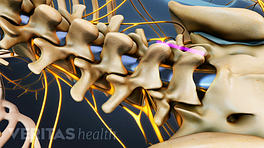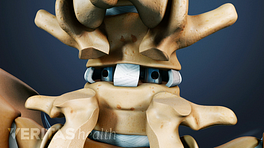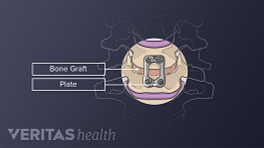Lumbar fusion surgery involves fusing two or more vertebrae with the goal of creating a solid stable bone structure. After surgery, the bone healing process follows three stages.
The first stage includes the inflammatory phase, which lasts for about five days. In this stage, a blood clot is formed at the site of the surgery. This clot provides a protective barrier for the treated area and helps propagate healing through the infiltration of several proteins and enzymes that promote the growth of new bone.
The second stage includes the repair phase, which lasts for about a month. In this stage, new bone tissue is generated through a process called osteogenesis, which bridges the gap between the fused vertebrae. Specialized cells, such as osteoblasts and chondroblasts, produce new bone and cartilage, which gradually solidify and fuse with the surrounding bone tissue. The bone graft used in the surgery also serves as a scaffold for new bone growth.
The third and final stage is called bone remodeling, which lasts anywhere from the 18th day of surgery to several months or years after the surgery. In this stage, the new bone tissue is gradually reshaped and strengthened, as it responds to the stresses placed upon it by movement and weight bearing in the spine.
During these stages, it's important to follow the doctor's instructions for post-surgical care, including physical therapy and activity modification to ensure proper bone healing and avoid complications.
In This Article:
- Lumbar Spinal Fusion Surgery
- Spine Fusion Risks and Complications
- Video: Stages of Bone Healing in Lumbar Spine Fusion Surgery








